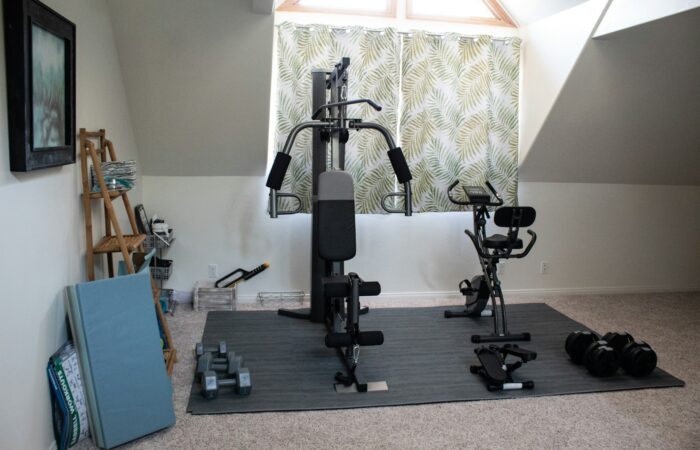
If you think home AV systems have peaked, think again. The world of home audio visual technology is accelerating fast, with trends in 2025 promising dramatic changes to the way we experience movies, music, and smart home entertainment.
This blog explores the most exciting audio visual trends on the horizon, helping you make informed decisions as you plan your next home upgrade.
Whether you’re a film buff or someone who just wants the very best sound for your living room, you’ll learn what’s new in AV technology and what to expect throughout the coming year.
Immersive Audio Goes Mainstream
Spatial Audio Shapes the Soundscape
Give your living room the feeling of a high-end cinema without leaving the house. Spatial audio is moving beyond luxury setups, with major brands now integrating this feature into more affordable home AV systems.
Technologies like Dolby Atmos and DTS:X place individual sounds in 3-dimensional space, making movie and concert experience astonishingly lifelike.
Some smart home entertainment speakers even use AI to adapt the audio experience to the specifics of your room.
Multiple Source Management Simplifies Listening
With Wi-Fi 6 and Bluetooth LE Audio rolling out globally, managing several high-quality music and video sources from one hub is now a reality.
Unified control panels and updated mobile apps mean that toggling between Spotify, Apple TV, or your vintage turntable has never been easier.
Display Technology Gets Smarter and Sharper
MicroLED and OLED Dominate the Market
TVs were already getting bigger and bolder, but 2025 will be the year MicroLED and OLED panels become the new default for premium home AV systems. Aside from delivering richer contrast and true black levels, these displays are far more energy-efficient.
Expect slimmer profiles and flexible screen designs that adapt to your viewing habits—even morphing sizes for different types of content.
8K is Now Accessible
While 8K TVs used to be reserved for the most enthusiastic tech lovers, more affordable models are emerging as tech giants ramp up mass production.
Upscaling algorithms powered by AI fill in the gaps for standard definition content, making even your oldest DVDs look impressive on today’s new displays.
Voice Integration and Hands-Free Control
Voice Assistants Control the Action
Google Assistant, Amazon Alexa, and Apple’s Siri continue to push the boundaries of hands-free convenience.
You can now walk into your entertainment zone and simply say, “Start movie night,” and your AV technology springs to life, adjusting lighting, closing blinds, and launching your preferred streaming apps.
Personalized Profiles for Every Family Member
AV systems are learning to recognize individual users’ voices, fine-tuning content preferences and volume settings for whoever is in the room. These smart features ensure a more tailored and enjoyable smart home entertainment experience for everyone.
Multiroom Audio Without the Hassle
Wireless Audio Quality Reaches New Heights
Leading brands like Sonos and Bose have removed the last barriers to seamless multiroom audio.
Advancements in lossless wireless transmission mean high-resolution sound can travel from room to room without lag or interruption, even in homes with challenging layouts.
Seamless Sync Across Devices
By 2025, expect truly effortless syncing of audio across different device types and brands. Universal AV technology standards are becoming a reality, so you don’t have to stick with a single brand’s ecosystem.
Sustainability and Minimalism in AV Design
Eco-Friendly Materials and Manufacturing
Consumers increasingly want AV systems designed with the planet in mind. Look for products made with recycled materials, energy-saving standby modes, and vendor transparency around sustainability efforts.
Minimalist Setups That Don’t Sacrifice Power
2025 will see a move toward discreet, low-profile speakers and screens that blend into your décor. Wireless designs reduce cable clutter, while ultra-thin mounts keep your space feeling open and modern.
Augmented and Virtual Reality Enter the Living Room
AR for Interactive Content
AR is making smart home entertainment more interactive, with experiences that overlay stats, charts, or tutorials onto live sports or instructional programming.
Some new projectors and TVs will deliver AR content that syncs with what’s on screen, offering a richer way to learn or play.
Virtual Reality Becomes Social
VR headsets are shrinking in size and price, granting access to multiplayer movie watching, gaming, and concerts in beautifully rendered virtual venues. Expect more AV systems to offer native compatibility with leading VR devices and platforms.
Security and Privacy in Connected Entertainment
Advanced User Authentication
With the rise of internet-connected devices, keeping your personal information safe is a high priority. 2025 brings biometrics and multi-factor authentication to home AV systems, so only authorized users can control your setup or access sensitive content.
Smarter Network Protections
AI-enhanced firewalls and encrypted communications will soon become standard on most high-end setups, minimizing risks while ensuring fast streaming and glitch-free gaming.
Shaping the Future of Home Audio Visual Trends
Choosing a home AV system in 2025 is more about lifestyle and experience than just screen size or speaker wattage.
From AI-enhanced sound to planet-conscious designs and fully immersive augmented reality, there has never been a better time to invest in the future of your home’s entertainment.
Keep up with new developments by reading manufacturer guides, attending tech expos, and engaging with online communities of smart home enthusiasts.
If you’re looking to learn more or want expert advice, consider consulting a home AV specialist who can match your needs with the latest innovations.
Subscribe To Get Update Latest Blog Post
No Credit Card Required









